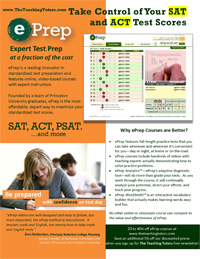Memorizing and understanding physics formulas, equations, and constants for any physics course can be both a challenging and frustrating task. Some students are more fortunate than others and are provided with a set of some formulas and constants by the teacher. Others however must memorize the formulas and know how to use them (though they are usually provided with constants).
How to Apply Physics Formulas
Beyond having a list of formulas or even having memorized them, the student must at some point understand how to use the formulas and know in which case(s) they apply. Also important to know are which units to use when plugging in values to a given formula. This point is extremely important and very few formula sheets or physics books for that matter outline all the physics formulas with the appropriate units that need to be used for each individual formula.
The Seven Base Units Used for All Physics Formulas
The units used in physics are based on SI (International System of Units) which rely on the metric system. The seven base units are represented as follows: length is measured in meters (m), mass is measured in kilograms (kg), time is measured in seconds (s), electric current is measured in amperes (A), temperature is measured in kelvins (K), the amount of a given substance is measured in moles (mol), and luminous intensity is measured in candelas (cd).
Derivations of SI Units Can Help in Remembering All of the Physics Formulas
It is important to note that all other units used in physics are derived from the above-mentioned SI units. For example, when the student uses newtons, it is in fact the same as kg-m/s^2. Another common unit, the joule, is actually another way of representing a newton-meter (N-m) which can be transformed into SI units as kg-m^2/s^2. So, even though physics students use newtons, joules, and many other units, they can all be derived to SI units if needed. This can be of great use to a physics student having problems
remembering how to use all of the formulas needed to solve problems.
Understanding when to use a particular physics formula is also of great importance and is based on the student being able to identify which values are given in the question and which variable must be solved to obtain the answer.
A Comprehensive List of Physics Formulas, Equations, & Constants for High School Physics
The Teaching Tutors
has compiled a comprehensive list of the formulas needed to excel in any high school physics course in a 40-page e-book. Not only does this amazing document explain in detail when to use a given formula or equation, but it also tells the student which unit to use when plugging a value into a
physics formula! The student will not need to spend a lot of time looking up formulas since they are easily outlined in a concise table of contents and further categorized by subtopics such as Newton’s laws of motion, kinematics, electricity and magnetism, etc. The book also provides a detailed table of useful constants, various diagrams to aid in comprehending the right-hand rules, moments of inertia, and much more! Finally, the book can also be used to easily understand sign conventions when dealing with the formulas for mirrors and lenses!
If you enjoyed this post, make sure you subscribe to my RSS feed!




